Eight ways to use reviews in your content
Most of us make a decision to buy a product or a service based on the reviews we read online.
It doesn’t matter if they’re written by friends or strangers. What matters is that we’re seeing evidence from our peers that the decision to buy that product or service is the right one.
So it’s no surprise that reviews are most commonly found on product and services pages to entice prospects to click that “buy now” button. But there are many places and ways to use them for maximum impact. Here are eight of them.
1. Product or services pages
Reviews allow visitors to make a judgement about your product or service and to determine whether they can trust buying it from you or not. So it’s obvious that you’d want to include them on the product and services page.
Here’s how Amazon does it:
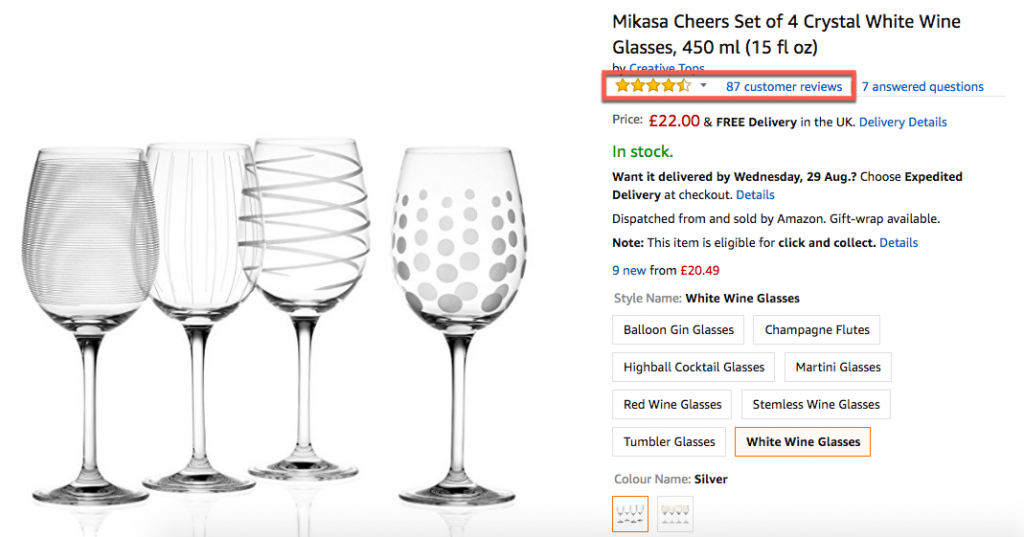
Amazon knows very well that the average customer rating and number of reviews are two key pieces of information that help users decide if a product is worth buying.
If you want to take full advantage of the reviews you receive, don’t stop at product and service pages. Add them on your home page, contact page, About page, and any other page that could help you to turn visitors into customers.
Here’s an example from our own 123 Reg website:
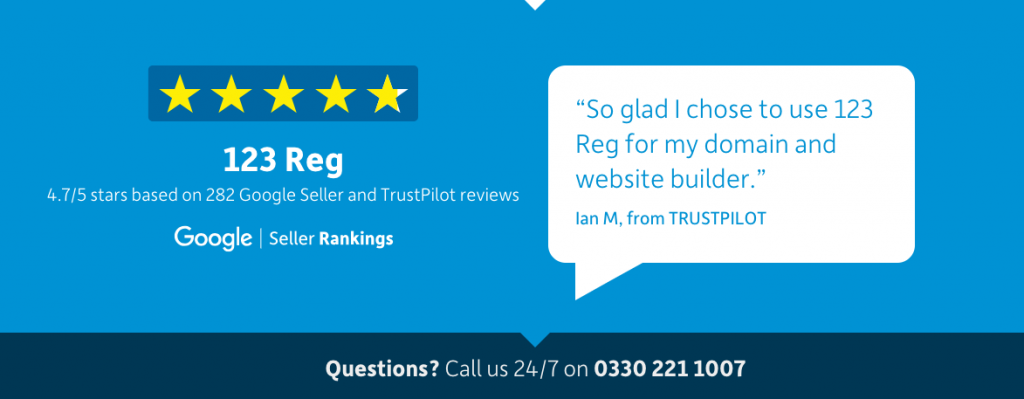
Just make sure that the review is relevant to the page you’re placing it on. While general reviews work well on the homepage, contact and About pages, the ones you include on a product page should be specific to that product and the customers’ experience with it.
2. Next to calls-to-action
Reviews are effective at driving sales. So why not place one next to your calls-to-action, whether it’s a newsletter sign-up form, a content download or a “buy now” button.
This is a great place to include a review. It can be the trigger needed to overcome a prospects’ final objections and convince them to buy.
Just make sure that the review is relevant to the product or service you’re selling on that page.
3. Blog content
Hullo sells buckwheat pillows. When you land on their blog and click to read a post, you’ll notice a relevant product with a customer rating pop up on the right side.
This is also supported by a call-to-action that invites readers to learn more about the pillow.

Hullo sets a great example of how to make the most out of your blog with a review that’s relevant to the content (as well as non-intrusive).
Here’s the thing: your visitors land on your blog because they’re interested in that topic and are most likely looking for a solution to a problem.
When you include a review that’s relevant to that particular article on your blog, you’re telling readers that you have the solution to their problem. And you’re also showing proof from others you have helped, thus reaffirming your credentials.
4. Case studies
Reviews are great but they won’t necessarily get a visitor to click that “buy now” button.
You know what makes them click? Results. And what better way to show results than through case studies?
FitBit has a section on their blog called “Success stories” where users share how using FitBit has helped to change their lives, become more active and make healthier choices.

Steve Kamb, the owner of Nerd Fitness, turned one of his client’s transformations into a case study where he explained the process, the time and effort invested and the results achieved.
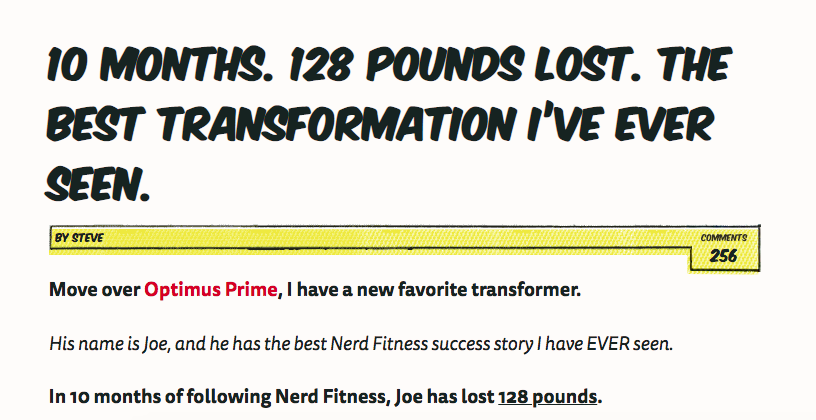
When everything else fails to capture potential customers’ eye, case studies like these can make them believe the results of your work.
So make sure that when you get an amazing review from a customer, you follow up and turn it into a case study.
5. Emails
Reviews aren’t used in email as much as they could be. It’s a shame because emails are very effective at turning subscribers into customers, and including reviews is the exact button to press.
Here are a few great examples of how you can include reviews in your email marketing.
This first one is from Harv Eker International where he’s looking to get more people to join his class. To do that, he also included a few reviews from former students:

In this next email from Social Media Examiner, they added a customer review and placed it right before the call-to-action:
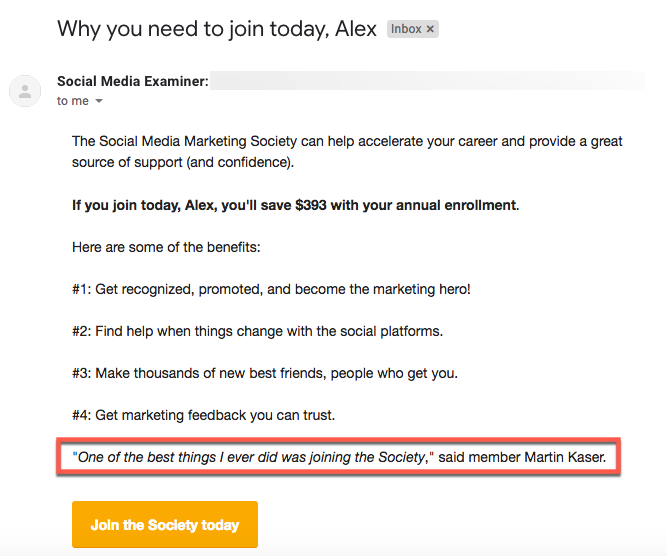
6. Turn it into an infographic
There are so many formats you can experiment with to showcase reviews. Apart from text and video, you can also use them to generate great visuals like infographics and images.
Here’s a simple example from Mastek:
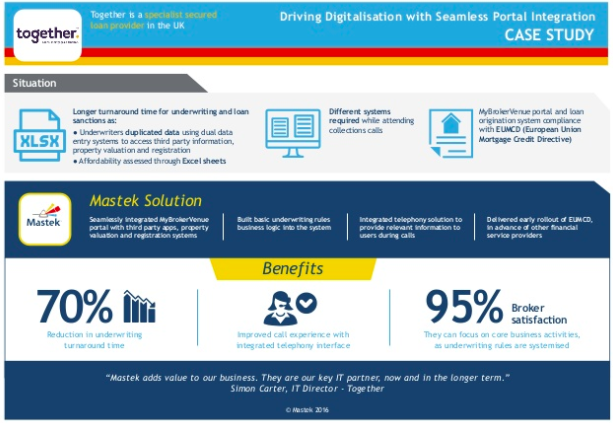
They’ve created an infographic to show just how much they’ve helped their client, while also including a testimonial from that client.
Another benefit about turning reviews into images, infographics or videos is that they’re also great for promoting on social media.
You probably already know by now just how effective visuals are on social media channels like Facebook and Twitter so make sure you share those visual reviews on whichever platforms you use.
7. Social media posts
Social media channels like Facebook, Twitter, LinkedIn, Instagram, are great for highlighting customer reviews.
You have lots of options for sharing reviews on social media. You can share them as text or video or you can turn them into visuals like an image or an infographic.
You can also turn reviews into ads like in this example from Peloton:
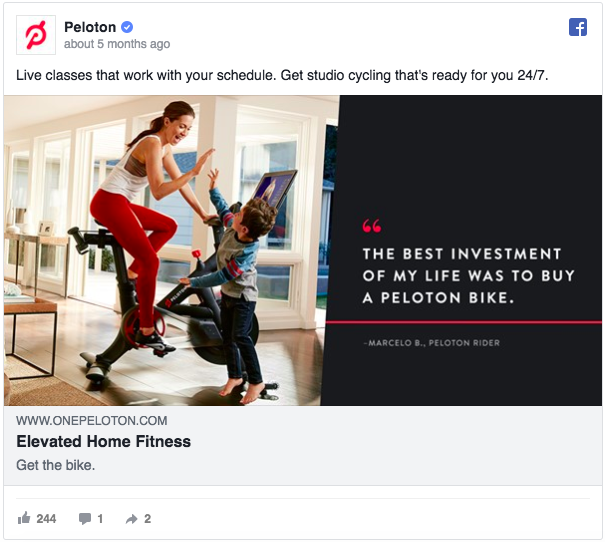
If your business is present on reviews sites like TrustPilot, you can quickly share customers’ reviews directly from the site and onto your Facebook account, like in this example:
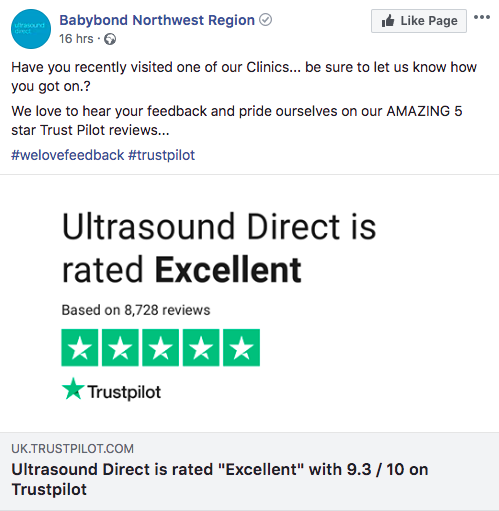
Want to thank customers for their amazing reviews? Here’s a great way to do it with video:
8. Offline
While it’s understandable that print marketing materials have taken a back seat to their digital counterparts, that doesn’t mean you should forget about print and offline.
Print campaigns still have a lot to offer. So try to include reviews anywhere you think they would make an impact, from print, billboard and outdoor ads to brochures.
You can even add them at the store shelf, like in this example from a bookstore:

Wrapping up
Reviews drive sales, so it makes sense to use them wherever they can have a positive effect. The examples above showcase some different ways to use reviews in your content, but we’re sure there are many more. Experiment with as many as you can see to see what works best for your business.
